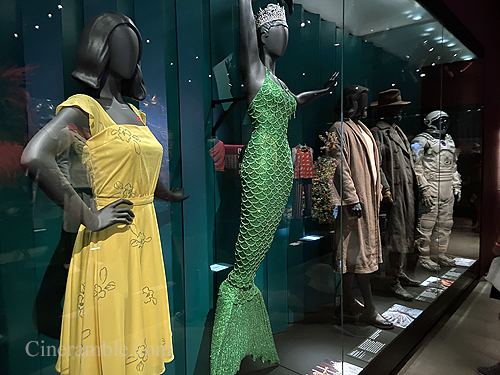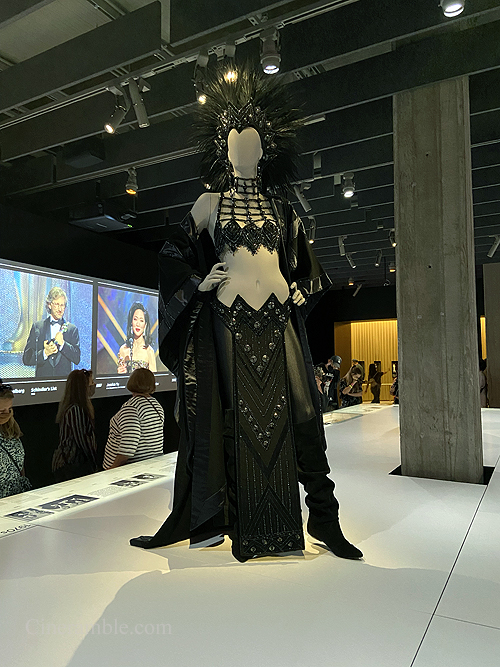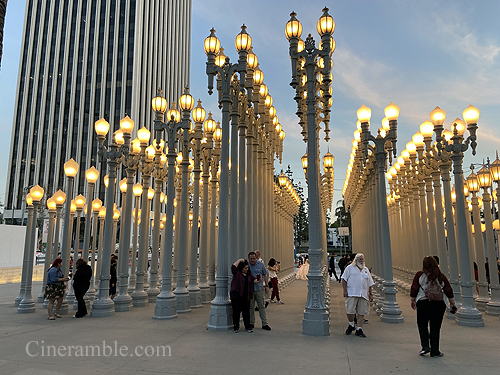
In it’s 90-plus years of existence, the Academy of Motion Picture Arts and Sciences has established the literal gold standard for preserving the arts and advancement of the cinematic medium. They are the caretakers of so much of film history, as well as the makers of movie history themselves, being the creators of the Academy Awards. But apart from the Oscars, what they have also done over the years is use their clout to advance the art and technology of film within the industry through Fellowships, Libraries and Venues for special Screenings and Presentations. They have also amassed a varied collection of artifacts throughout the years related to the history of film ranging from documents, to props and costumes, to set pieces, and promotional pieces like posters and lobby cards. However, despite having a robust collection at their disposal, the Academy hasn’t had a place to show it all off publicly. There have been Academy run exhibitions throughout the years in various places, but there has never been a permanent home for the Academy to present it’s history to the world. That is until now. After sitting abandoned for several years on the corner of Fairfax and Wilshire in Los Angeles, the iconic art deco May Co. Building was purchased by the Academy with the intent on turning it into the Academy’s first ever museum devoted entirely to the art of film. The position of the new museum is an ideal one, right at the heart of Los Angeles’ famed Museum Row; across the street from the Petersen Automobile Museum and next door to the sprawling Los Angeles County Museum of Art (LACMA) complex, as well as a short distance from the famous La Brea Tar Pits. With the ideal location set, the work was ready to begin on this expansive new remodel of the nearly 80 year old building.
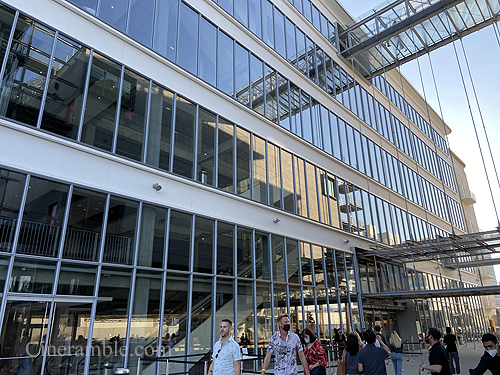
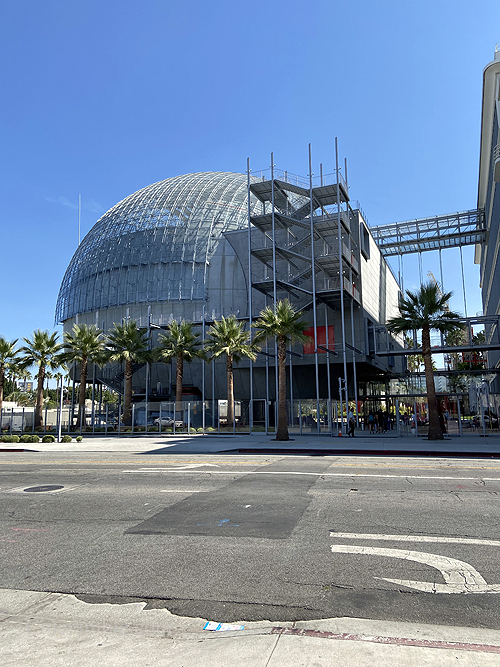
Taking place over the course of several years, the Academy Museum slowly but surely began to take shape. While much of the exterior of the iconic building remained unchanged, inside saw the whole structure gutted and rebuilt to fit the needs of the new museum as well as retrofit the building up to modern, earthquake ready standards. But that’s not all that was planned for the project. Taking up much of the projects time, money and effort was an add-on to the existing building that in itself became a new icon for the neighborhood. Knowing that a movie museum would need a movie theater of it’s own, the construction plans included a massive theater complex unlike any other. Free-standing behind the May Co. Building and connected via two glass enclosed bridges is the David Geffen Theater, a nearly 2,000 seat facility that is a structural wonder in of itself. Inside is a state of the art theater with wall to wall opulence, but on the outside, the building is remarkably elevated off the ground via only a couple of sturdy columns. Visitors to the museum can literally walk underneath the massive structure suspended above them, and a walkway on the top floor also allows for guests to walk on top of it, with a massive glass dome encasing the open air terrace. Here guests are treated to an enviable view of the Hollywood Hills, that spans across from Beverly Hills all the way to the Griffith Observatory in a stunning panorama. And this wonder is just the first thing you will see once you arrive at the museum. After several delays, the project finally was set to open for the Holidays in 2020, but then the Covid pandemic hit, and the long wait continued. Despite being practically done for over a year, the Academy Museum had to wait longer to welcome it’s first guests in, and that moment finally arrived last week on September 30.
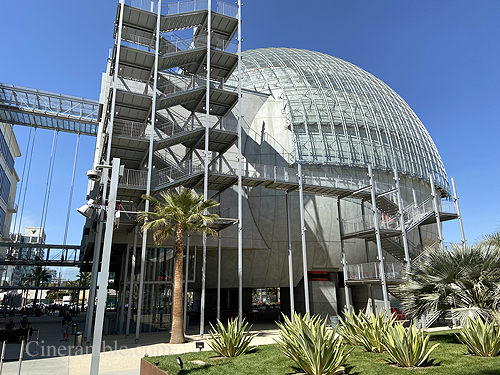
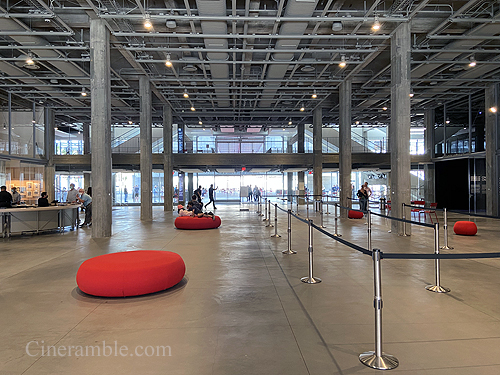
Without hesitation, I got my tickets for the earliest possible opportunity to visit this new museum and see if all the hype was worth it, especially after waiting even longer through the pandemic. I have visited the LACMA museum before for special movie related exhibits, specifically those dedicated to Stanley Kubrick and Guillermo Del Toro, but they were short term exhibitions in a wing of the sprawling museum. This new museum is a permanent home for exhibitions related solely to the art of film, and it’s long overdue to find such a museum in the shadow of Hollywood itself; especially one run by the Academy itself. I was lucky enough to get a place reserved for the opening weekend, which thankfully saw perfect So Cal weather for such a trip out into the city. The museum of course was still operating under local Covid protocols and everyone was required to wear a mask indoors at all times and show proof of vaccination upon entry. The entryway was on the backside of the main building, making everyone arrive in the courtyard that the massive David Geffen Theater looms over. Here you get a real sense of the scale of this complex. The Geffen Theater looms over the courtyard like a massive spaceship that has descended to the ground. Some have jokingly referred to it as the Death Star, given it’s similar curvy shape and futuristic look. Given the often common California heat, the museum also wisely set up benches underneath the Theater, where people can relax in the cool shade of the massive shadow the theater leaves on the ground. Once pass the health and security checkpoints, it was into the main building’s first level that we enter. The lobby is modest, bearing some of the characteristics of what had been there before, including the exposed concrete columns that support the building. A gift shop is naturally found there, but there is also a full service restaurant found on this level. Named Fanny’s, this eatery offers a full dining experience as well as cafe and lounge for casual diners, which includes an outdoor patio. I was not hungry during my visit, so I passed on eating there at the museum. Instead, I began my journey through the musueum by making my way to the first gallery there in the lobby.
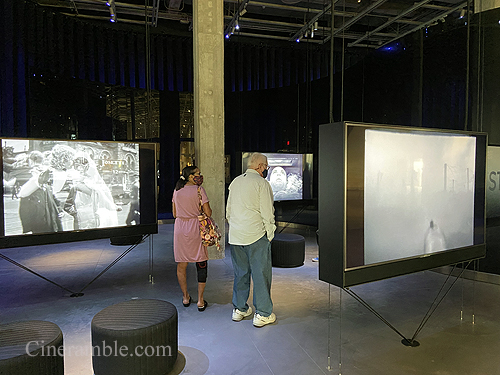

Housed in the Spielberg Family Gallery on the first floor is the first room in what is meant to be the core exhibit of the entire complex. In this room, there were large flat screen TVs playing a loop of great moments from movies throughout the history of film. Here, we see the first part of the core Stories of Cinema exhibit. It’s a simple but elegant introduction to give guests a reminder of the incredible art of film in it’s final form. What I liked here is that the various clips shown are assembled in no particular fashion. They are just images without context or theme. Some are moments that are among the most iconic that have ever been put on film, while others are just random bits pulled from a variety of movies. They also span across genre, nationality, and social level, showing how cinema in general is a singular art that affects everyone in the world and collectively is it’s own work of art. The people in my vicinity took a lot of extra time to stick around and watch the different clips play out on the screens in front of them, having a little fun guessing which clip belongs to which movie, which was sometimes harder than many of us thought. A lot of the clips play in silence but every now and then a clip would include audible sound or dialogue, which created it’s own kind of symphonic experience there in the room. The dimly lit space gave a nice sense of visual stimuli to help remind us what film is in the simplest sense. From this point onward, the remainder of the museum was going to show just why those moving images are so important and why they have become works of art on their own.
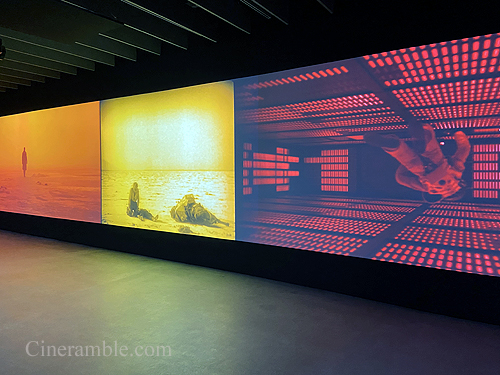
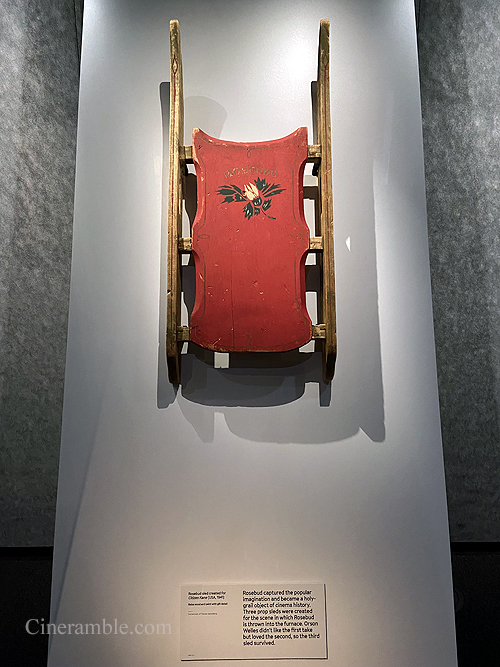
Ascending to the second level aboard a row of escalators, we arrive at the second part of the Stories of Cinema experience, which is also the single largest gallery of the museum. One thing that I did notice on the way there is that to get to the next level of the gallery, you bypass an in-between level which is actually the entryway to the Geffen Theater; lined with a red carpet of course, which extends even across the glass walkway. Past the front doors of the Stories of Cinema exhibit, guests are greeted by a massive projection wall. Here we see a bigger version of the gallery downstairs, with projected images from various films creating a mural effect in front of you. Unlike downstairs, however, the mural’s images follow a theme throughout the different montages. Past this wall of movie images we finally arrive at the first true gallery of artifacts. Here, the gallery separates into different aspects of the filmmaking profession, with different movies and individuals highlighted. For screenwriting, the movie focused in the first section is Citizen Kane (1941). Immediately, you eye will be drawn to the centerpiece item in this area, and that’s the famed Rosebud sled. This actual movie used prop is the only surviving Rosebud from the film, and it’s great to see it preserved as well as it is. From there, a section devoted to editing spotlights Thelma Schoonmaker, and it includes a model of an editing bay that she likely worked with in her early days piecing together movies like Taxi Driver (1976) and Raging Bull (1980). Another section devoted to cinematography spotlights Emmanuel Lubezki, with many of his on set photographs displayed throughout. A room devoted to movie stars next to it spotlights Bruce Lee, and contains both the outfit he wore in Enter the Dragon (1973) and his pair of num-chuks.
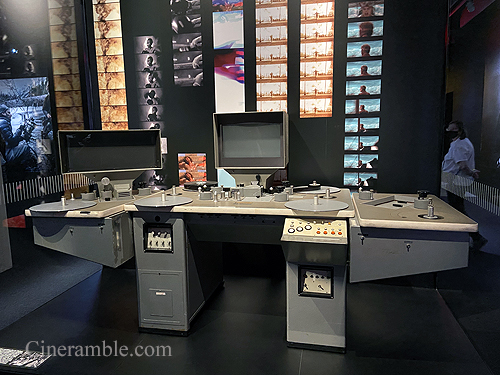
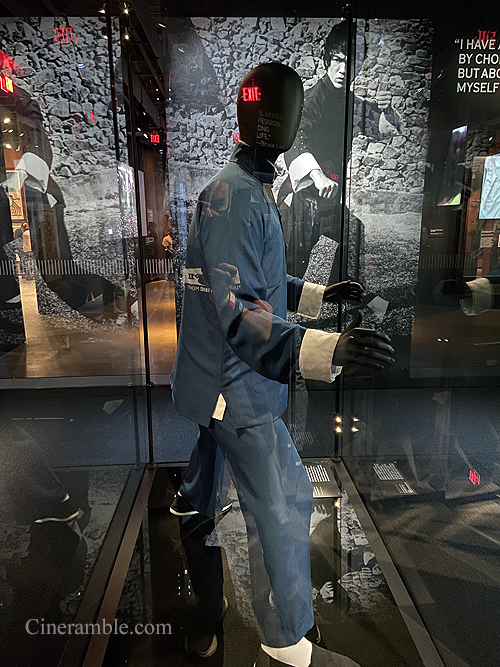
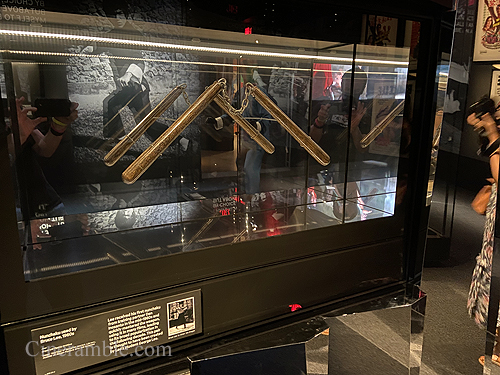
Beyond this section we arrive at an area that I’m sure was going to be especially important to the Academy when planning out the museum. It’s a section devoted to the history of the Academy Awards. You enter this section with a beautiful circular room draped in gold with display cases all along the wall each containing an Oscar from many different eras. The Oscars span pretty much every decade that the Oscars have been held, going from the very first Oscars in 1927 to one from 2016. The winners vary from legends like Clark Gable, Billy Wilder, and Sidney Poitier to more recent winners like Alfonso Cuaron and Barry Jenkins, who surprisingly lent out their Awards to be displayed here. What struck me upon seeing all these real awards up close is how little the award has changed over the years. The pedestals that the awards sit on has changed the most over the years, but it appears that the golden statue itself has used the same mold since the beginning. I also thought it was neat that an empty case was left to acknowledge the award given to Hattie McDaniel, the first person of color to ever win the Award. The whereabouts of Hattie’s award are unknown, hence the absence here, but it is nice that the Academy chose to spotlight the significance of it here, hoping that one day it might reappear and find it’s way into this very gallery. In the room next to this, we get a large table-like structure that displays a full year-by-year timeline of the Oscars. On top on this table are also a few artifacts, including Rita Moreno’s Oscar dress from the 1962 ceremony, and Cher’s infamous black showgirl outfit that she wore to the 1986 Oscars. There’s also a menu from the first Oscar banquet, as well as the infamous envelope from the La La Land/Moonlight mix-up. And along the walls, acceptance speeches throughout the years are presented. Anyone, like me, who is fascinated by the history of the Academy Awards will definitely see this area as a highlight.
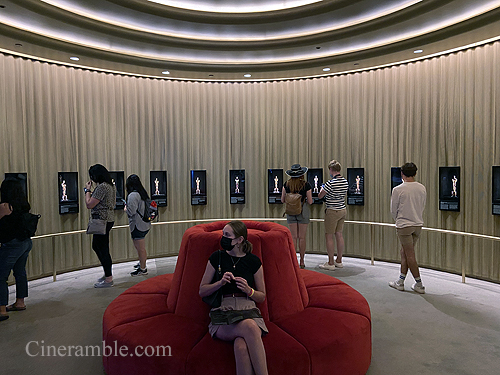

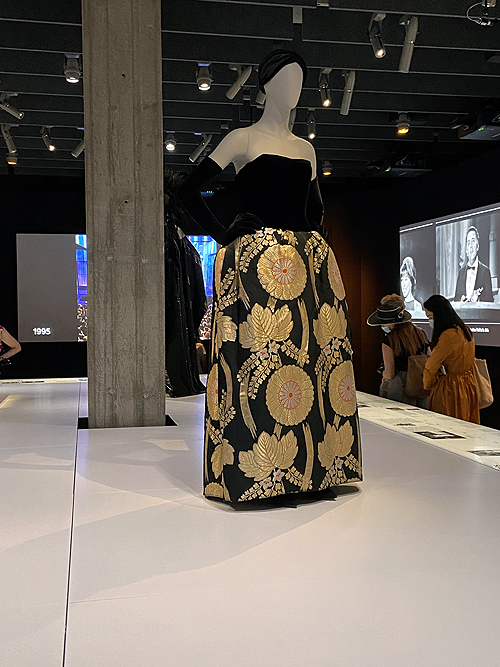
The next room spotlights the Director, and in particular, the one given focus here is Spike Lee. The room is full of numerous artifacts from the director’s movies, as well as noteworthy memorabilia of the director’s own flamboyant persona. It includes the tribute purple suit that he wore to the Oscars to honor both Prince one year and Kobe Bryant a couple years after. There’s also Spike’s two Oscars on display. But what I found most interesting was the fact that throughout the room were memorabilia and posters from Spike’s own collection that he’s had signed by many of his own creative idols. This includes directors like Martin Scorsese, Francis Ford Coppola, movie stars like Kirk Douglas and Sidney Poitier, as well as sports icons like Michael Jordan and Muhammed Ali. It’s just an interesting insight into the man to see that he’s an autograph collector. Beyond that is a room devoted to production design and spotlighted here is an all-time classic; The Wizard of Oz. There are interesting artifacts to be found all over this area, including the Witches hat, some of Dorothy’s dresses, and the Tin Man’s oil can. But what is clearly the centerpiece of this gallery, and what I am sure is going to be one of the most visited and photographed artifacts in the entire museum, is the Ruby Slippers; specifically the ones used in the film for close-ups. They are still in remarkable condition over 80 years later, and I’m sure the museum knew just how valuable an addition to the gallery these shoes are. Beyond that room we arrive at costuming and make-up, and this is another impressive collection that spans all eras. In here, guests will find one of Shirley Temple’s dresses, as well as famous costumes that include Marilyn Monroe’s red dress from Gentlemen Prefer Blondes (1952), Jeff Bridges Big Lebowski (1998) bathrobe, Russell Crowe’s battle armor from Gladiator (2000) and the flower dress from Midsommar (2019). The make-up display includes interesting artifacts as well like a fake chest of scars that Leonardo DiCaprio wore in The Revenant (2015) and facial prosthetics that Charlize Theron wore to look like Meghan Kelly in Bombshell (2019). After this, it was on to part three of the museum.
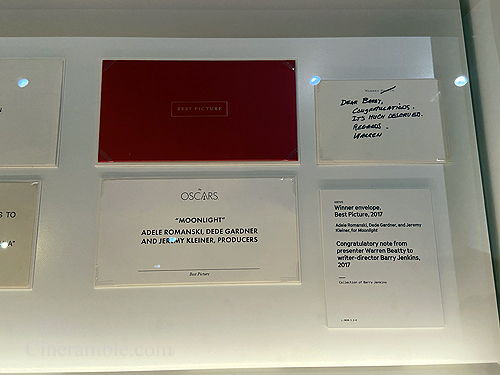

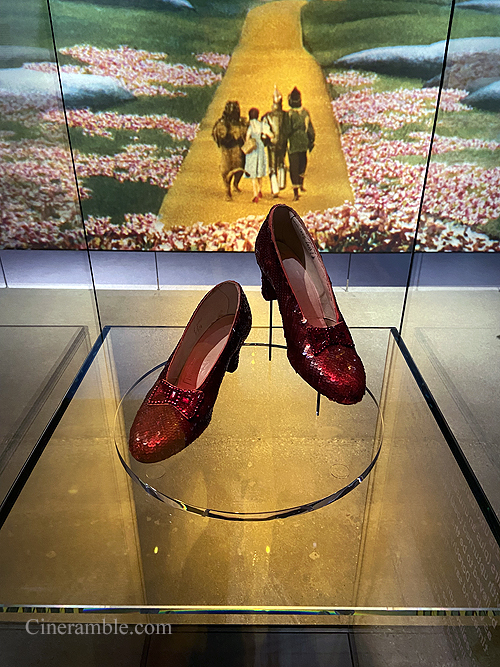
On the third level, we arrive at the final part of the Stories of Cinema exhibit. In the first room of this section, we are presented with a showcase of a particular director’s body of work. In particular, this room was spotlighting the works of famed Spanish auteur Pedro Almadovar. Throughout the room are projection walls that display select moment from his movies. It’s an interesting experience walking across the room and seeing all the movies this man has made displayed in front of you. It might even be a bit confusing if you’re not familiar with his work, but it could inspire to seek his movies out. Along the outer walls are posters from all of his movies throughout the years, some from his native Spain as well as many international ones as well, and a few domestic American ones. It’s a little different from the flow of the rest of the exhibit, and I feel like this is the section that is likely going to change very frequently over the years, probably spotlighting many more filmmakers along the way. In the next room we are presented with an overview of animation history. Along the walls you’ll see artwork from all the different areas of animation, from studios of all kinds. There are early pioneers spotlighted here like Windsor McKay, independents, and big names like Disney, Warner Brothers, and Pixar too. One of the most interesting artifacts here is a fully equipped animators desk; this one specifically belonging to one of Walt Disney’s treasured Nine Old Men, the legendary Frank Thomas. Displayed in the middle of the room is a section devoted to stop motion animation. Here they displayed the puppets from some of the most noteworthy stop-motion animated productions, including Jack Skellington head models from The Nightmare Before Christmas (1993), Mr. and Mrs. Fox from Wes Anderson’s Fantastic Mr. Fox (2009), a couple of Wallace and Gromit puppets from the famous Aardman shorts, and a puppet of Kubo from Laika Animation’s Kubo and the Two Strings (2016). For animation fans, this is a great all-encompassing look at the history of the medium, and one that contains a lot of interesting items.
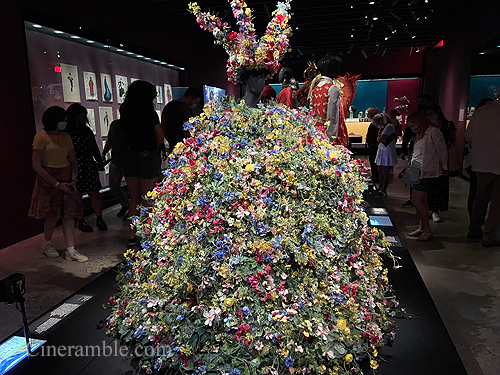

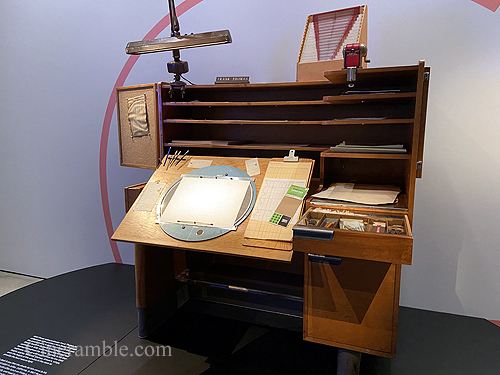
Up next is a room devoted to special effects. And here is where you’ll find probably the most stunning collection of artifacts gathered in a single room. Right away your eye will be drawn to R2-D2 and C-3PO, both the actual costumes worn in the movie by Anthony Daniels and Kenny Baker. But throughout you’ll also find a Xenomorph skull from Aliens (1986), the creature costume worn by Doug Jones in The Shape of Water (2017), an animatronic of E.T., some of the Jim Henson studio puppets used in The Dark Crystal (1982), an animatronic head of the T-800 used in The Terminator (1984), and many more interesting artifacts. There also seemed to be a section devoted primarily to the effects from Tim Burton’s Batman Returns (1992). This includes large models used for the gothic mansions in the film; matte paintings on large panes of glass, and there’s even the prosthetic nose that Danny DeVito wore to become The Penguin in the movie. It really shows you the incredible work that went into making a movie like that, as stylized as it is, feel real on screen. Next to this expansive room is one of the most interesting experiences I found in the whole exhibit. It’s a room devoted to music in film. Instead of showing the guest something, the exhibit instead crafted an experience related to music. You enter through a doorway and enter a pitch black room, illuminated solely with a faint red light bulb. Visibility in this room is so faint that you can even see the walls. In the center is a small bench underneath the red light and there you sit. Unseen around you are Dolby certified speakers that create a haunting soundscape. Oscar winning composer Hildur Guonadottir (Joker) composed a new piece just for this experience, and it is chilling but also a fascinating experiment. It’s allowing the guest to experience the music free of visual distraction. And after that, the Stories of Cinema experience comes to an end. I should also note that in addition to the exhibits in the last two levels, there is a two level exhibit in between devoted to an artifact so big that it needed to span across two floors. In this one, called Backdrop: An Invisible Art, it spotlights the long used filmmaking tool of creating a painted backdrop to create the illusion of the outdoors on an indoor soundstage. For this exhibit in particular, the museum put on display an impressive two story tall backdrop of Mount Rushmore used in Alfred Hitchcock’s North By Northwest (1959). It’s a neat addition, and I almost worry that many people may actually miss it as it’s located in between the main galleries,

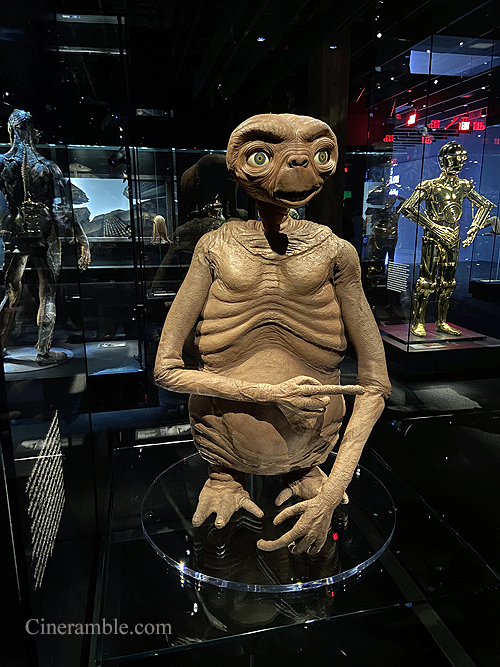
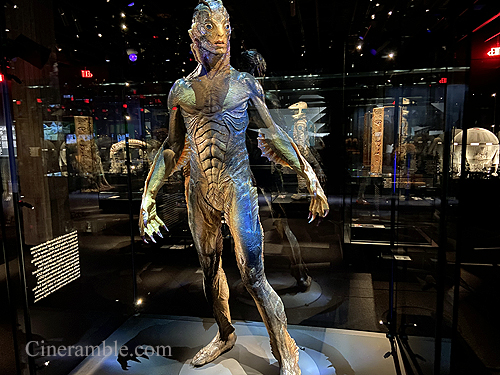
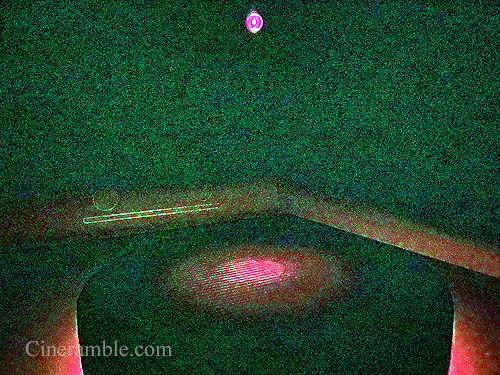
Up one floor more, we arrive at the section of the museum devoted primarily to temporary exhibitions. For this opening season, and continuing on to June of next year, this floor is going to be home to a celebration of the works of Hayao Miyazaki, the legendary Japanese animator. The Miyazaki exhibit showcases artwork from throughout his illustrious career, and the exhibit itself takes on the aesthetic that is characteristic of his films as well as those of his home production company, Studio Ghibli. The lighting and staging of this gallery is especially beautiful to look at, particularly if you are a Studio Ghibli fan. Sadly, photography in this section of the museum was strictly prohibited, probably as a condition of displaying the artwork on loan to the museum. So, I can only give you a glimpse of the outside signage of this gallery. I can tell you that the outside only gives a mere hint as to what you’ll see inside. And it includes numerous hand drawn artwork from Miyazaki and his team, spanning across all his film, including the ones he made in his early years for Japanese television. Also shown throughout the exhibit are clips from the various movies, which gives a lot of nice context to the artwork that we are seeing displayed throughout. It’s not as expansive as the other galleries, but still a treat for animation fans. One nice treat immediately next door to this gallery is a contraption celebrating a studio that was heavily influenced by Miyazaki; Pixar. Here, you’ll find a small, dark room housing the Toy Story Zoetrope. The Zoetrope is a 3D sculpture featuring the characters from the Toy Story movies all displayed on a circular roundtable. The sculpture will begin to spin rapidly and then a strobe light effect will recreate the effect of a film shutter. As a result of the sculpture spinning and the strobe lighting effect, it makes the many sculptures appear to move just like they are animated, with all the little differences in each sculpture creating an almost stop-motion effect. I’ve seen this Zoetrope on display before, at the California Adventure park next to Disneyland. It was removed years ago, and I’m happy to see it has found a new home here at the Academy Museum.
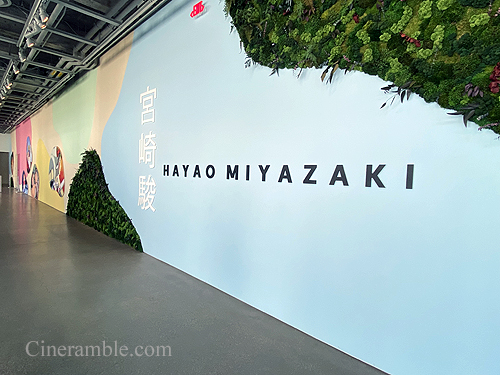
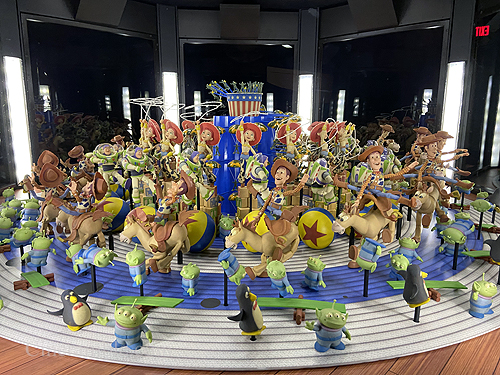
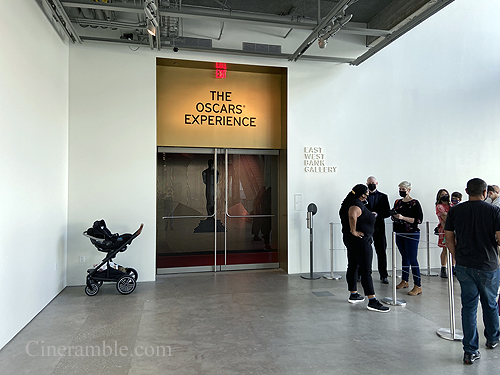
Another small gallery found here also takes a look at the grandfathers of cinema. Here we see the many inventions over the years that led to the invention of motion pictures. This gallery called The Path to Cinema: Highlights from the Richard Balzer Collection, has several neat artifacts that show the many different influences that preceded film, like shadowplay, peepshows, dioramas, magic lanterns, zoetropes, and praxinoscopes. Eventually this little exhibit ends with the very beginnings of cinema itself, with a model of the original Lumiere Brothers camera that created some of the first moving pictures in history. A screen also displays many of the first short pieces that both the Lumiere’s and their American contemporary Thomas Edison were making in those early days at the turn of the 20th Century; including so remarkable early film images of Paris, London, and New York that have survived a century later. For a really good understanding of what led to art of film becoming a reality in the first place, this section is really worth checking out. Also located in these upper levels is a separately ticketed section called The Oscar Experience. I chose to not include this as a part of my trip, as I was more focused on the exhibits themselves, but from what I understand, this is a immersive experience that recreates for the guest the experience of accepting an Oscar on stage in front of the audience at the Dolby Theater. I’m sure that this is a fun little experience for some people to enjoy, but for the $15 price, it might be a little too much for too little. I’d rather not spend my money on living a fantasy, but that’s just me. Still, I did see a fair amount of people lining up for this, so I guess it was a smart addition for the museum to add. I just wonder how it’s done in there. Is it accomplished with VR, or with projection effects? How effective is the immersion? Maybe curiosity might lead me to check it out, but I was fine with skipping it on this day.
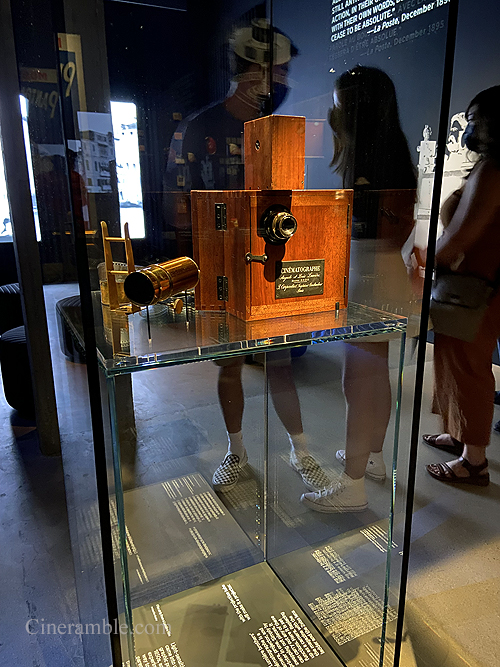


After that, the tour of the museum is pretty much over with. All that is left is ascending to the top level where you’ll find the final glass bridge across to the terrace atop the Geffen Theater. If this is where your tour comes to a close, it is certainly a worthy finale. The view from this terrace will really take your breath away. At a height of over 100 feet, you get a pretty good, unobstructed view of the surroundings. Immediately in front of you is the famous Farmers’ Market and adjoining Grove mall. Behind that is CBS Television City, where many shows like The Price is Right are filmed. To the left is West Hollywood, the Sunset Strip, and the eastern edge of Beverly Hills. You’ll also see the Beverly Center mall in your view and the famous Cedar Sinai Hospital. To the right, the heart of Hollywood itself. Unfortunately, landmarks like the Chinese Theater and the Cinerama Dome can’t be viewed past the high rises in the area, but you do get a good look at the all important Hollywood sign, with which no view of Hollywood is complete without. And your panoramic view can extend as far as the sight of the Griffith Observatory, made famous in movies like Rebel Without a Cause (1954) and La La Land (2016). Outside of the terrace view, looking to the side of the building, you’ll see a large construction site currently going on, as LACMA is replacing it’s long standing structures with a new facility in it’s place; which includes a section that will span across Wilshire Boulevard itself. After a long day on your feet within the galleries, there are benches set up on top here just like there are underneath the theater. I imagine this terrace will host many events in the future such as parties and even concerts, and I’m sure that it was designed with that in mind. Across from it in the main building, there is even more indoor event space, so I’m sure the Academy hopes to use this top level for special private events. But when they aren’t, the terrace is open to the public and it gives every guest a nice place to relax and enjoy the majesty of Hollywood before them.
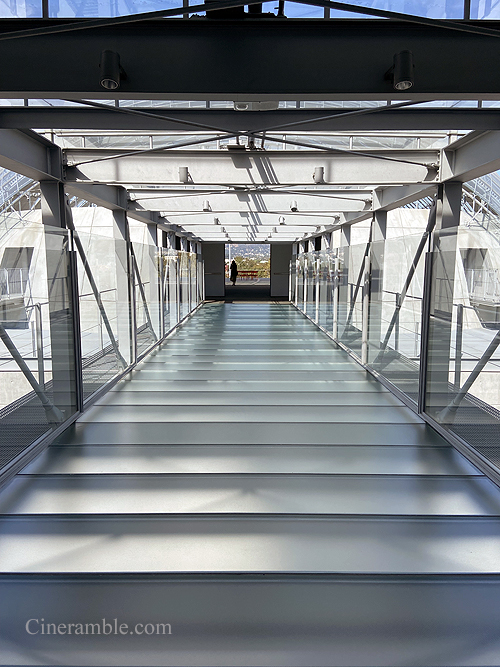
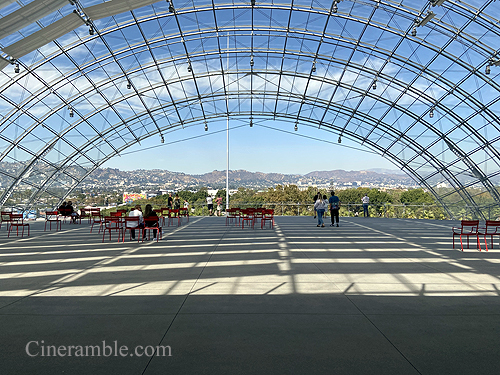
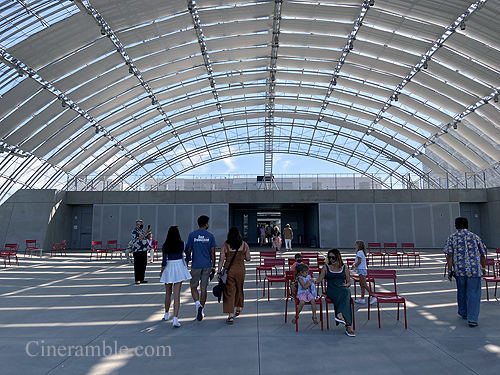
And that in a nutshell is what I saw on my first trip to the Academy Museum of Motion Pictures. As a passionate cinephile living in Los Angeles, I have long wanted to see a large scale museum devoted entirely to the art of cinema, and thanks to the Academy, we finally have one. It will be interesting to see how the exhibits change over the years. For a start, this collection of exhibits did a fantastic job of launching this new museum onto the cultural stage of this city. And even with the 5 1/2 hours that I spent in there, I still didn’t cover the whole thing. For one thing, I still haven’t been inside either of the two theaters there; the large scale Geffen Theater that I’ve previously discussed, and the smaller 300 seat Ted Mann theater that is found in the main building’s basement. I would love to come back soon just to watch a movie in wither one of those theaters, and thankfully I learned upon leaving that the Academy is going to have a continuous program of screenings throughout the year. For this month, they are spotlighting horror movies for the Halloween season, and on the night I was there, The Bride of Frankenstein was the movie being shown. Unfortunately, I didn’t plan ahead and the screening was already sold out. So, one more reason to make a return there again. Even if I’m not going to a screening, I can think of a dozen reasons to make a return visit. It was really cool seeing all these different artifacts on display, the Oscars room, the Back Drop room, and the Animation room being particular highlights for me. And after the Miyazaki exhibit has come to an end, I am really interested in seeing what the Academy Museum will replace it with in their rotation. I’m sure that movie lovers from all over the world will definitely want to check this new museum out, and I strongly recommend that everyone does. Even the most casual of movie fans will find something that will peak their interest in there. It’s open every day of the week and each day of the year. Admission for Adults is $25, $19 for senior, $15 for students, and free for guests under 17. The Oscar experience is an extra $15 if that interests you. Overall, it was worth the extra weight and I’m glad that it did live up to the hype. It’s especially nice to see that they managed to repurpose an already iconic building and breathe new life into it; in a way reflecting the mission of the museum itself. It’s there to honor the past while also getting us excited for the future of cinema. Whether you already live in Los Angeles or are just passing through, definitely give the Academy Museum a visit, as it is a marvelous shrine to the glory that is the Art of Cinema.
